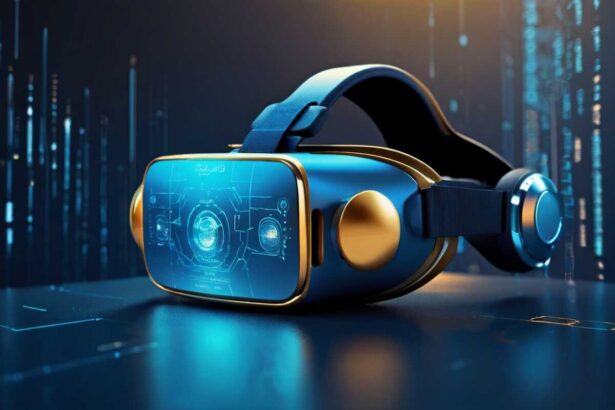Metaverse biometric is the greatest leap ever made by any technology. It goes down when it changes from a pure-web to multi-lateral. It is reasonable to see similar predictions since everyone will understand love differently, while technologically, we will think of it as foreign.
- Metaverse: Examining the Potentials and Opportunities
- The Metaverse User Authentication and the Role of Biometrics
- Unlocking Security with Biometric Authentication
- What Exactly is Metaverse Biometrics?
- Biometrics as an Integral Part of Security Management in the Metaverse
- Metaverse Biometric Verification: Making the Metaverse More Secure and Personalized
- Decentralization
- Data Immutability
- Data Encryption
- Enhanced Security
- Metaverse Biometric Identity Verification
- User Convenience
- Biometric Personalization in the Metaverse
- Conclusion
The metaverse is a new digital realm that utilizes 3-D technology, virtual reality, augmented reality, and cutting-edge internet and semiconductor advancements to provide individuals with realistic online experiences for personal and business purposes.
So, that is how “metaverse” goes back to the 90’s. He allowed men to express themselves and created the virtual world of his works.
For instance, one may name the Metaverse “The next World,” which will be quite similar to the Universe, with only minor contrasts to the real-life Universe, but similar to the three-dimensional web. They are represented by their personae’s avatars by which they speak directly. Some other people also assert that, at times, entry points into the Metaverse could be the perfect representation.
All right, to sum up, is a biometric validation. Therefore, in case of eventuality, a hybrid approach that includes several technologies like virtual reality, augmented reality, mixed reality, social media, blockchain, and so on will play a role.
Metaverse: Examining the Potentials and Opportunities
As per Bloomberg, Metaverse should reach almost US$800 billion during this period. Nevertheless, such big obstacles may result in huge chances.
However, the co-founder of Facebook and Meta, Mark Zuckerberg, states that we should be ready in five or ten years, the full manifestation of the metaverse concept.” This raises an important question for businesses: Nevertheless, all modern projects should focus on profitability of returns. Therefore, we too need to start doing “make money.”
The Metaverse User Authentication and the Role of Biometrics
Authentication of users in the metaverse is changing towards better safety and ease of use—a more detailed look at these changes.
Read ” A deep dive into metaverse” and find out more on Metaverse.
Passwords
This has been one of the most frequently used means of identifying oneself. However, they come with inherent problems:
Complexity
Creating complex passwords, mostly a combination of letters, numerals, and even symbols, is necessary for users, but remembering these can be difficult.
Security Risks
People can lose passwords, write them wrongly, or forget them. Recycling a password across various sites leads to heightened vulnerability levels.
Password Expiry
While some businesses require alteration of passwords occasionally, others are inconvenienced by this procedure and do not necessarily secure themselves.
However, as evidenced by some of those challenges outlined earlier in this assignment, people increasingly avoid using passwords to confirm who they truly are in the metaverse.
Multi-factor Authentication (MFA)
The MFA introduces another step a user must go through to confirm the right identity. For example:
The users start the process by inputting a username and a password. Then, a unique code is generated and sent to their preferred emails or phones. People can now input this password to access it.
MFA has an edge over passwords only due to its added security features. However, it has its considerations:
Email Vulnerability: In some cases, MFA methods may become less potent if fraudsters obtain a user’s email account.
Friction Points: User annoyance or frustration may result from an extra step in MFA.
Unlocking Security with Biometric Authentication
Smartphone users have recently preferred biometric authentication due to convenience. This convenience entails only touching sensors to open them and even using one’s face to unlock devices.
It has a good reputation for being one of the safest and most reliable authentication methods with great accuracy. Nevertheless, biometric authentication is quite strong but might be prone to some deficiencies. Although rare, breaches of biometric data are also possible.
What Exactly is Metaverse Biometrics?
Biometrics technology refers to the unique physiological or behavioural traits used to identify each individual. It entails assessing and comparing these separate characteristics to authenticate someone’s identification. These common biometrics methods include facial recognition, fingerprints, geometry of hands, iris and retina scans, and DNA tests.
However, advanced biometric techniques test unique traits such as heartbeat, palates, vein patterns, or even scent. Biometric recognition seeks to corroborate the subject’s true identity accurately.
As an illustration, metaverse biometrics is significant in security systems, access controls, digitally signed services, and DIDs. It is especially important in today’s fast-paced environment, where instant, reliable identification becomes crucial.
Biometrics as an Integral Part of Security Management in the Metaverse
Biometrics forms the core of providing identity management in the metaverse. It uses unique bodily attributes, such as fingerprints and face prints, to authenticate individual identity.
Although biometrics have been employed in security applications, such as biometrically controlled exit gates in airports or palm vein verification through smartphones, they have gone beyond this usage today. It is, therefore, widely used as a tool for employee access control and customer services in electronic banking and virtual shopping sites. Individuals sometimes have to use their fingerprints or face scans for authentication.
Strong authentication can be crucial with increased social engineering attacks and security breaches threatening the metaverse. User identity is at stake as cyber criminals concentrate on vulnerable authentication techniques. With all these risks, however, businesses must find ways to deal with authentication vulnerabilities.
Biometric authentication surpasses this. It enables users to authenticate themselves swiftly and safely using facial recognition or thumb printing. Identity theft risks are lessened because every individual’s biological features are unique. Biometric authentication acts as a powerful shield in the dynamic environment of the metaverse, where new security dangers are constantly arising.
Metaverse Biometric Verification: Making the Metaverse More Secure and Personalized
Integrating biometry within the realm of the blockchain and the metaverse promises intriguing prospects while maintaining a healthy mixture of protection and personalization. It’s time to consider how these technologies can improve the metaverse experience.
Metaverse operations, in a secure way, need blockchain technology. Here’s how it bolsters security:
Decentralization
Blockchain is a distributed system of several nodes that prevent a single point of failure. This makes the system secure in a metaverse because nobody controls or can manipulate it.
Data Immutability
After data has been stored on the blockchain, it cannot be edited or deleted. Metaverse transactions and user interactions are kept intact by the unalterable nature of this property.
Data Encryption
Encryption is one of the most important functions blockchain utilizes in keeping users’ confidential information safe within the metaverse.
Enhanced Security
Metaverse security is offered with such guarantees as blockchain’s consensus algorithms and cryptography, for example, resisting intrusion or leaks.
Metaverse Biometric Identity Verification
Blockchain is coupled with biometrics to provide a viable solution for identity verification of users. Here’s how it enhances the metaverse:
Precise Identification
Precise accuracy is offered in face recognition or fingerprinting, examples of biometrics. This makes it possible to allow only legitimate users to gain entrance into the metaverse.
Distributed Digital Identity
In this approach, biometrics serve as a credible and distributed verification mechanism within distributed digital identity systems.
Device Security
Fingerprints check the devices regularly, including the virtual reality goggles, preventing anyone from accessing the metaverse.
User Convenience
User-friendly and convenient biometrics. Users can also confirm their details using simple and easily remembered passwords. It’s faster and more intuitive.
Biometric Personalization in the Metaverse
Personalization is an extremely exquisite feature offered by biometrics in the metaverse world. Let’s break down how it all comes together:
Biometric Data Variety
Some of those biometric data encompassed eye tracking, motion patterns, physiological responses, and facial expression, among others, when collected from the user.
Machine Learning and AI Magic
Sophisticated machine learning and AI models delve deeper into that data to understand user behaviors and sentiments.
Tailored Experiences
With such analysis behind them, the metaverse can design bespoke engagements for individuals. For example, it can configure NPCs and game environments to match a player’s preferences or mood.
Immersive Engagement
The metaverse will utilize the available biotechnological data to manage nonverbal cues for unforgettable experiences in the metaverse.
Users’ emotions and actions can be used to dynamically generate a response from NPCs and a virtual environment that creates a higher level of immersion.
Biometrics in the metaverse creates a unique dimension, with personalized experiences that make technology work for you, leading to a more believable, involving virtual experience.
Conclusion
The metaverse’s security cannot be compromised, and personalized user experience is achievable through biometrics. On the other hand, it also has huge problems that must be examined to achieve a secure, tolerant, and honest virtual setting.
However, privacy concerns may be very high since people could have reservations about giving their sensitive biometrics information, fearing breach or misuse. This implies that safeguarding the privacy of such information becomes imperative. These pose security threats, with criminals attacking metaverse biometric systems that endanger the identity and protection of users.
Metaverse biometric recognition depends on particular traits that make it difficult for people needing access to the necessary hardware or those with face recognition problems. Consequently, unconvincing true positives or false negatives will produce user annoyance and authentication issues, indicating the importance of reliable systems.
In addition, ethical issues related to consent, data ownership, and surveillance should be carefully addressed not to undermine people’s rights while ensuring safety.
The metaverse can use metaverse biometrics for more secure, personalized, and immersive experiences that respect privacy and inclusivity in facing these hurdles. We shall have to contend with several challenges to move forward in utilizing the power of the metaverse.



















